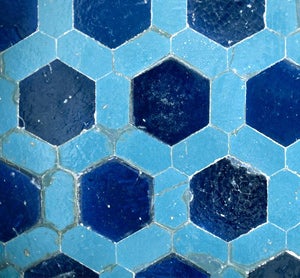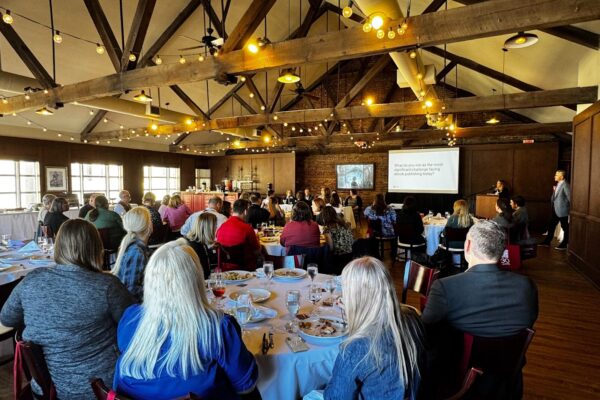Jacquelyn DeLombard
Beginnings Pre-School owner/teacher, Philadelphia Museum of Art Teacher Resource Center volunteer
Several weeks ago, the pre-kindergarten and kindergarten children from Beginnings Learning Center were at the Philadelphia Museum of Art (PMA) for one of the five lessons they attend during the school year. For the program, “Museum Looks and Picture Books,” PMA had sent the book, A Chair for my Mother, to school for the children to read prior to their visit, and now the class was following the guide to the American Wing to look at and discuss chairs. All of a sudden a child yelled, “Look! There’s Chuck Close! I want to go look at the rectangles and squares!”
Obviously the children not only knew their shapes, but also were very familiar with Chuck Close, who had previously been the artist of the month in their classroom, and thanks to Artstor’s zoomable images were very aware of the shapes he used in his work.
Children are taught to recognize and classify objects around them according to the attributes of shape, size, and color. These are the basics for nearly all learning that follows: writing, reading, mathematics, and even common household tasks like matching their socks or putting away their toys. For years preschool teachers have collected picture files from magazines, calendars and discarded posters and artwork because, next to a concrete object, an image is the clearest way to teach a young child something new. With the images from Artstor, the teacher is able to use works of art to teach very young children the simplest concepts of shape, size, and color, and continue to the more complex as children are ready for additional attributes or combinations thereof. At the same time, the children are almost incidentally learning the names of the works of art and their creators.
With the images projected in front of them, they can create their own shapes in a variety of media: paint, shaving cream, chocolate pudding, or catsup. They can compare what they see in the images to things found in their own classroom: rectangular windows, circular tables, and the rhythm band triangle. On the way home they will see traffic signs and understand what they mean by the shape long before they can read the words. (Of course everything in the preschool environment is labeled, giving them the opportunity to compare the word to the object.) So when the children recognized the Chuck Close painting AND the shapes in it at the museum, the teacher knew they really understood what they had been taught.
This essay was a 2011 Artstor Travel Awards winner.




